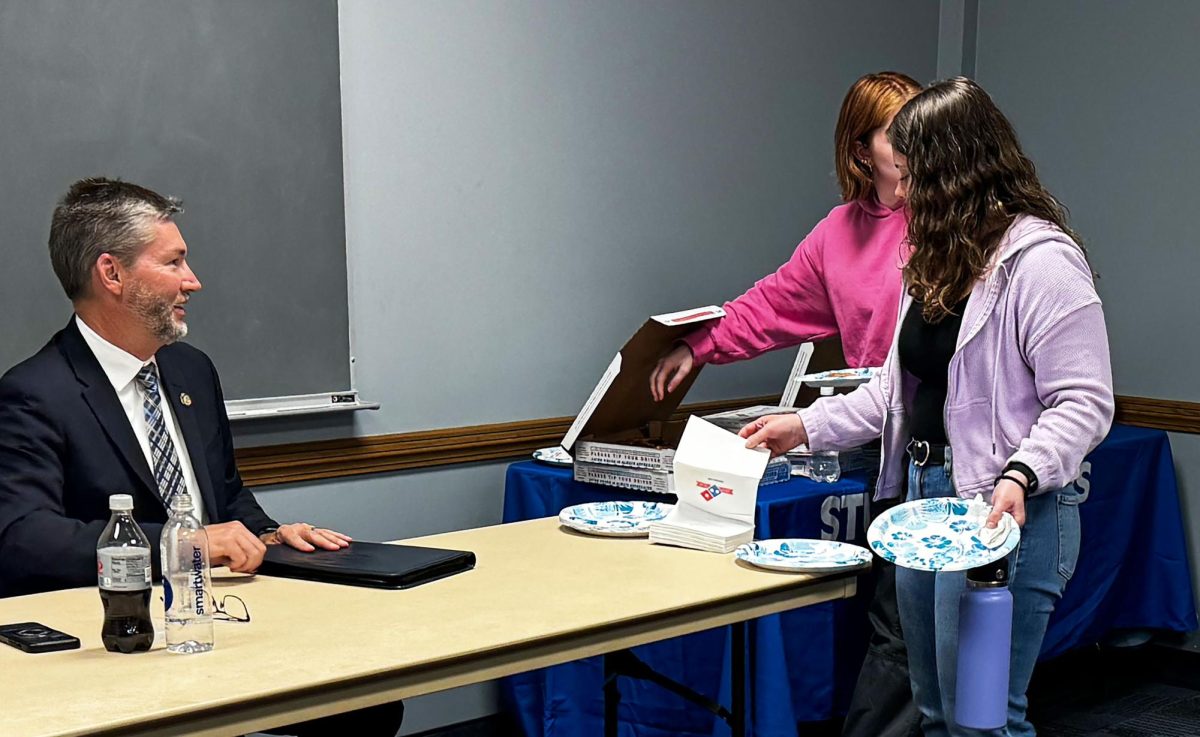Even the best-laid plays may backfire
Be careful what you ask for, because you just might get it. It appears as though Eastern is beginning to learn what that old adage truly means.
By now everyone knows that the university is bracing itself for the possibility of a budget shortfall. A shortfall that could send departments across the university scrambling to come up with $2.9 million.
Eastern has historically gotten the shaft when it comes to state funding. This year may be no different. Several factors went into the reason for the possible shortfall. Most notable were faculty salary increases and a slight drop in enrollment.
When the budgetary problems were first announced, Lida Wall, provost and acting vice president for academic affairs, said the projected shortfalls were based on an enrollment drop of 150 students. She went on to say that a decrease of much more could could further harm the budget.
Jeff Cooley, acting vice president for business affairs, added that if the enrollment were to increase, Eastern would have available funds to work with.
That makes sense: more students equal more tuition money coming in and more students living on campus, which translates into more money for housing and dining.
That sounds about right. But what isn’t right is that this is what Eastern wanted to do. In fact, the university has done it so well that it may very well have shot itself in the foot.
In the fall of 1997, the administration unveiled a plan to cut Eastern’s enrollment so it could remain “a predominantly undergraduate institution with an on-campus enrollment of 10,000-10,500 full-time enrolled students.”
The reason given for attempting to cut the enrollment in 1997 was that the university was beginning to grow beyond its means.
“With only so many tax dollars from the state, we cannot grow beyond our resources,” said Lou Hencken, vice president for student affairs, in the Sept. 29, 1997 issue of the Daily Eastern News. In 1999, the university again began talking about lowering enrollment. This time, Eastern was talking about raising admission standards to get better students. The new requirements would be among the toughest in the state.
The university said all of this was an attempt to help students graduate. I came here as a freshman under the old requirements and will graduate in a few months. Good thing, too, because there is no way I want to stick around here to see what happens.
What started out as a good idea has backfired horribly. The university wanted to help more students graduate, but instead they are making it harder for students to get out of here.
The budget cuts mean cutting faculty or slashing their class loads, either of which translates into less classes offered each semester. Less offered classes means more competition for classes and fewer students that will actually get into the classes they need to graduate. The end result makes it harder for students to graduate.
So now Eastern finds itself in an interesting position. Three years ago, the university wanted to cut enrollment because of a lack of resources. The university needed to get rid of a few students in order to have more money to provide a better experience for the students here.
Now that the enrollment has been cut, the university is saying it needs more students in order to get more money.
So which one is it? Is a bigger university better or is downsizing the way to go? Or was it just that somebody screwed up somewhere along the way and there needed to be some place to put the blame?
Originally, the low enrollment was blamed on the drop in the number of high school seniors throughout the state that graduated. As it turns out, the number of graduates had not actually dropped and, in fact, Eastern was the only state university that saw its enrollment decline.
This has the makings of a bitter dispute. The finger pointing has already started and excuses are beginning to fly around all over the place.
The lesson here is that you have to be careful what you ask for or you just might get it. But who could blame the university? I’m not sure if anybody thought the university could be this successful at something.











































